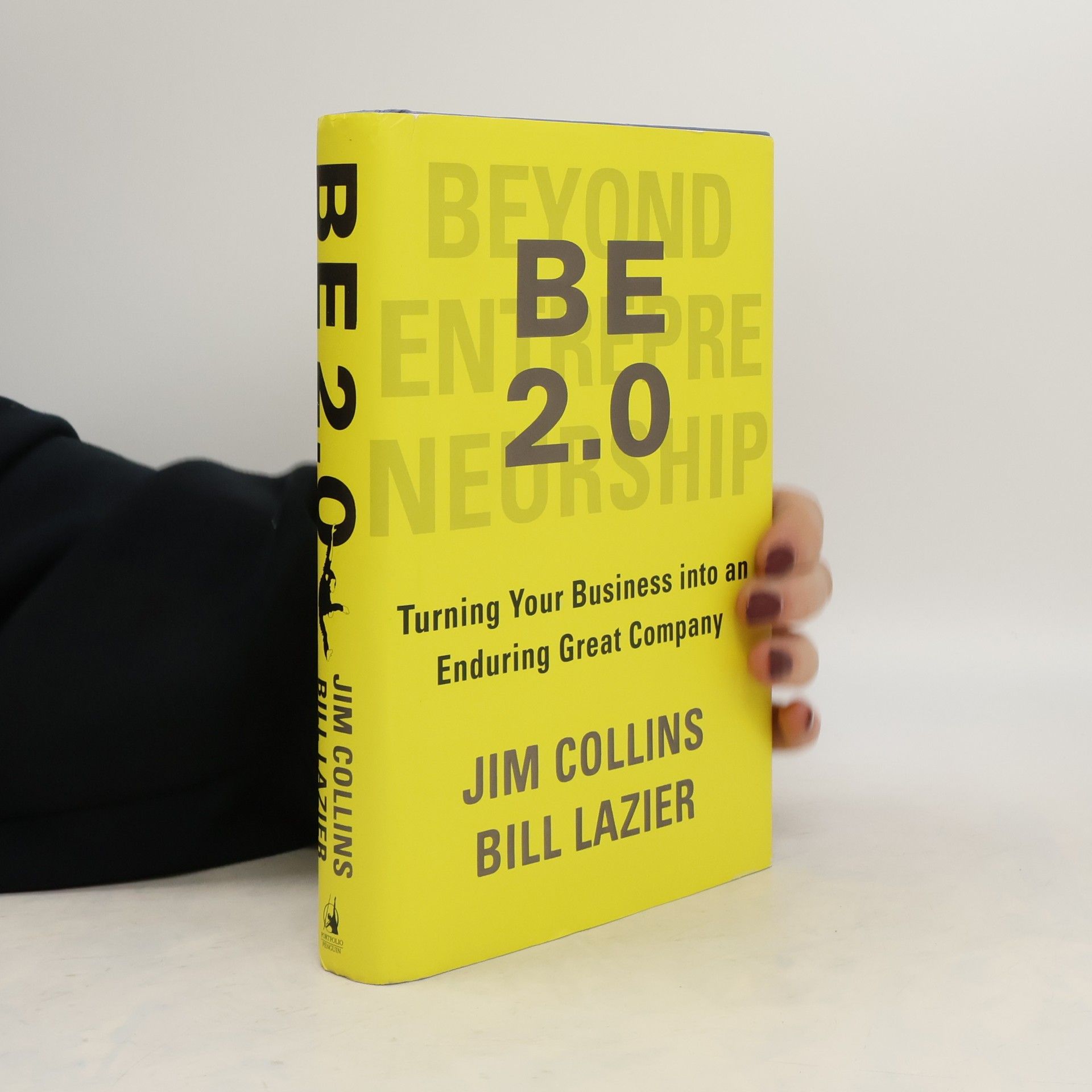Wer in die USA reist, begegnet der Drogeriekette Walgreens, die sich von einem unauffälligen Unternehmen zu einem der führenden Anbieter entwickelt hat. Jim Collins untersucht, was Firmen in die Topliga katapultiert. Um diese Frage zu beantworten, führte er ein umfassendes Benchmarking durch. Auf der einen Seite standen Take-off-Unternehmen, die über 15 Jahre eine durchschnittliche Aktienperformance zeigten, um dann den Marktdurchschnitt um das Dreifache zu übertreffen. Auf der anderen Seite wurden Unternehmen ausgewählt, die ähnliche Voraussetzungen hatten, aber nicht den Sprung an die Spitze schafften. Collins und sein Team führten intensive Medienrecherchen, Interviews mit Managern und umfassende Analysen durch, um Unterschiede zu identifizieren. Sie fanden heraus, dass die besten Topmanager oft zurückhaltend und bescheiden sind, jedoch eine starke berufliche Willenskraft besitzen. Zudem entdeckten sie, dass erfolgreiche Manager zunächst die falschen Mitarbeiter entlassen, bevor sie eine neue Vision verkünden. Die Erkenntnis, dass Take-offs meist das Ergebnis langsamer Veränderungen sind, statt plötzlicher Revolutionen, ist bemerkenswert. Überraschenderweise sind einige der vorgestellten Take-off-Unternehmen eher unbekannt, während andere, die man erwartet hätte, nicht den Anforderungen entsprechen. Ein lesenswerter Einblick in Unternehmensführung!
Jim Collins Bücher







Immer erfolgreich
- 400 Seiten
- 14 Lesestunden
Jim Collins untersucht, was herausragende Unternehmen von anderen unterscheidet und welche Lehren aus ihrem Erfolg gezogen werden können. Seine Analyse bietet wertvolle Erkenntnisse für Gründer und Unternehmer, die ein Unternehmen aufbauen und nachhaltig führen möchten.
Das Schwungrad
Eine Begleitschrift zu »Der Weg zu den Besten«
Der Management-Vordenker Jim Collins macht anschaulich, wie aus guten Unternehmen Spitzen-Unternehmen werden. Die Schwungrad-Methode aus seinem Management-Klassiker »Der Weg zu den Besten« hilft dabei. In diesem Add-on untersucht Jim Collins, wie verschiedene Unternehmen aus unterschiedlichsten Sektoren ihr Schwungrad konstruiert haben, um mehr als nur erfolgreich zu werden. Mit diesen Praxistipps können Unternehmer und Führungskräfte ihr eigenes Schwungrad konstruieren und es zu Höchstleistung antreiben.
UNGEWISSHEIT, CHAOS - NA UND? Trotz der anhaltenden wirtschaftlichen Unsicherheit florieren einige Unternehmen, während andere scheitern. Was machen die Manager erfolgreicher Unternehmen anders? Wie bereiten sie sich vor, um Turbulenzen zu überstehen und sogar für ihren Aufstieg zu nutzen? Dieses bahnbrechende Buch verrät es Ihnen. Damit Ihr Unternehmen auch in schwierigen Zeiten ein Spitzenunternehmen ist. Und bleibt! „Ein Buch, dessen Erscheinen CEOs kaum erwarten können.“ USA Today „Collins und Hansen ziehen interessante und unerwartete Schlüsse aus ihren Studien - weit entfernt von trockener Forschung.“ Wall Street Journal
BE 2.0 (Beyond Entrepreneurship 2.0)
- 352 Seiten
- 13 Lesestunden
"What's the roadmap to create a company that not only survives its infancy but thrives, changing the world for decades to come? Nine years before the publication of his epochal bestseller Good to Great, Jim Collins and his mentor, Bill Lazier, answered this question in their bestselling book, Beyond Entrepreneurship. Beyond Entrepreneurship left a definitive mark on the business community, influencing the young pioneers who were, at that time, creating the technology revolution that was birthing in Silicon Valley. Decades later, successive generations of entrepreneurs still turn to the strategies outlined in Beyond Entrepreneurship to answer the most pressing business questions. BE 2.0 is a new and improved version of the book that Jim Collins and Bill Lazier wrote years ago. In BE 2.0, Jim Collins honors his mentor, Bill Lazier, who passed away in 2005, and reexamines the original text of Beyond Entrepreneurship with his 2020 perspective. The book includes the original text of Beyond Entrepreneurship, as well as four new chapters and fifteen new essays. BE 2.0 pulls together the key concepts across Collins' thirty years of research into one integrated framework called The Map. The result is a singular reading experience, which presents a unified vision of company creation that will fascinate not only Jim's millions of dedicated readers worldwide, but also introduce a new generation to his remarkable work" --Amazon
From Jim Collins, the most influential business thinker of our era, comes an upgrade of his classic, Beyond Entrepreneurship, that includes all-new findings and world-changing insights. What's the roadmap to create a company that not only survives its infancy but thrives, changing the world for decades to come? Jim Collins and his mentor, Bill Lazier, answered this question in their book, Beyond Entrepreneurship. Beyond Entrepreneurship 2.0 is a new and improved version of that book. In this upgraded edition, Jim Collins reexamines the original text of Beyond Entrepreneurship with his 2020 perspective. The book includes the original text of Beyond Entrepreneurship, as well as four new chapters and fifteen new essays. Beyond Entrepreneurship 2.0 pulls together the key concepts across Collins' thirty years of research into one integrated framework called The Map. The result is a singular reading experience, which presents a unified vision of company creation that will fascinate not only Jim's millions of dedicated readers worldwide, but also introduce a new generation to his remarkable work.
Turning the Flywheel
- 46 Seiten
- 2 Lesestunden
A companion guidebook to the number-one bestselling Good to Great, focused on implementation of the flywheel concept, one of Jim Collins’ most memorable ideas that has been used across industries and the social sectors, and with startups.The key to business success is not a single innovation or one plan. It is the act of turning the flywheel, slowly gaining momentum and eventually reaching a breakthrough. Building upon the flywheel concept introduced in his groundbreaking classic Good to Great, Jim Collins teaches readers how to create their own flywheel, how to accelerate the flywheel’s momentum, and how to stay on the flywheel in shifting markets and during times of turbulence.Combining research from his Good to Great labs and case studies from organizations like Amazon, Vanguard, and the Cleveland Clinic which have turned their flywheels with outstanding results, Collins demonstrates that successful organizations can disrupt the world around them—and reach unprecedented success—by employing the flywheel concept.
Great by Choice
- 320 Seiten
- 12 Lesestunden
Enumerates the principles for building a truly great enterprise in unpredictable, tumultuous and fast-moving times
Turning Goals into Results
- 96 Seiten
- 4 Lesestunden
Most executives have a big, hairy, audacious goal. They write vision statements, formalize procedures, and develop complicated incentive programs--all in pursuit of that goal. In other words, with the best of intentions, they install layers of stultifying bureaucracy. But it doesn't have to be that way. In this book, Jim Collins introduces the catalytic mechanism, a simple yet powerful managerial tool that helps translate lofty aspirations into concrete reality. Catalytic mechanisms, the crucial link between objectives and performance, are a galvanizing, nonbureaucractic means to turn one into the other. What's the difference between catalytic mechanisms and most traditional managerial controls? Catalytic mechanisms share five characteristics: (1) they produce desired results in unpredictable ways; (2) they distribute power for the benefit of the overall system, often to the discomfort of those who traditionally hold power; (3) catalytic mechanisms have teeth; (4) they eject "viruses"--Those people who don't share the company's core values; and (5) they produce an ongoing effect. To illustrate how catalytic mechanisms work, the author draws on examples of individuals and organizations that have relied on such mechanisms to achieve their goals. The same catalytic mechanism that works in one organization, however, won't necessarily work in another. Catalytic mechanisms must be tailored to specific goals and situations. To help readers get started, Collins offers some general principles that support the process of building catalytic mechanisms effectively.-- Provided by publisher
The authors claim that two qualities are common to 'visionary' companies: a guiding philosophy and a challenging goal. They have interviewed the leaders and senior managers of 18 world class companies including Boeing, Hewlett-Packard, Walt Disney, 3M and Sony, and examined just what makes them tick and how it is they have outstripped their competitors. The book forms a blueprint for success for companies around the world, who can learn valuable secrets of how to succeed in today's climate of change and fierce competition.


